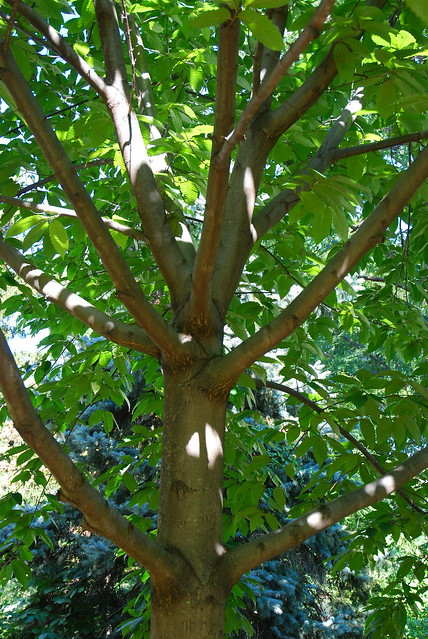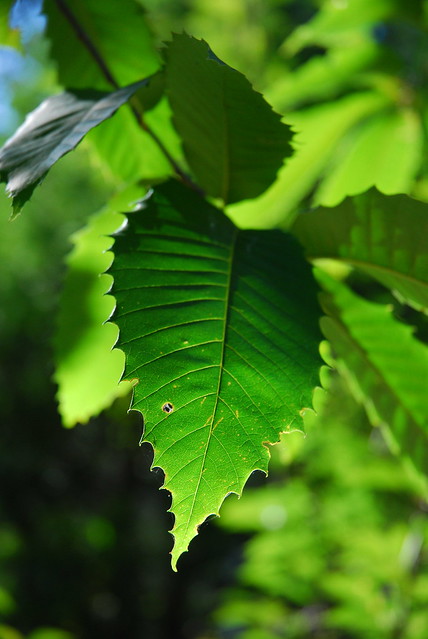Before the early 1900's, there were approximately 4 billion American chestnut trees in the Northeast. They stood up to 110 feet tall and provided delicious nuts for street vendors to roast and sell during winter months. But due to a fungus-related disease called chestnut blight, American chestnuts rapidly disappeared. Fortunately, chestnut blight does not kill the tree's roots, so some sprouts survived. Today there are hundreds of healthy American chestnuts in the mountains of Michigan and Pennsylvania.
 |
| An American chestnut. Photo credit: njheart2heart |
How can you tell if you've spotted a rare American chestnut?
- The leaves are simple and alternate and are usually between five and nine inches long. They are yellow-green and have sharply toothed edges.
- The flowers are yellow cylindrical clusters, between four and nine inches long. They bloom between the late spring and early summer.
- The edible chestnuts grow inside of prickly burs. Up to three nuts can be found in one shell. They sprout in early autumn.
 |
| The jagged edges of an American chestnut leaf. Photo credit: njheart2heart |

No comments:
Post a Comment